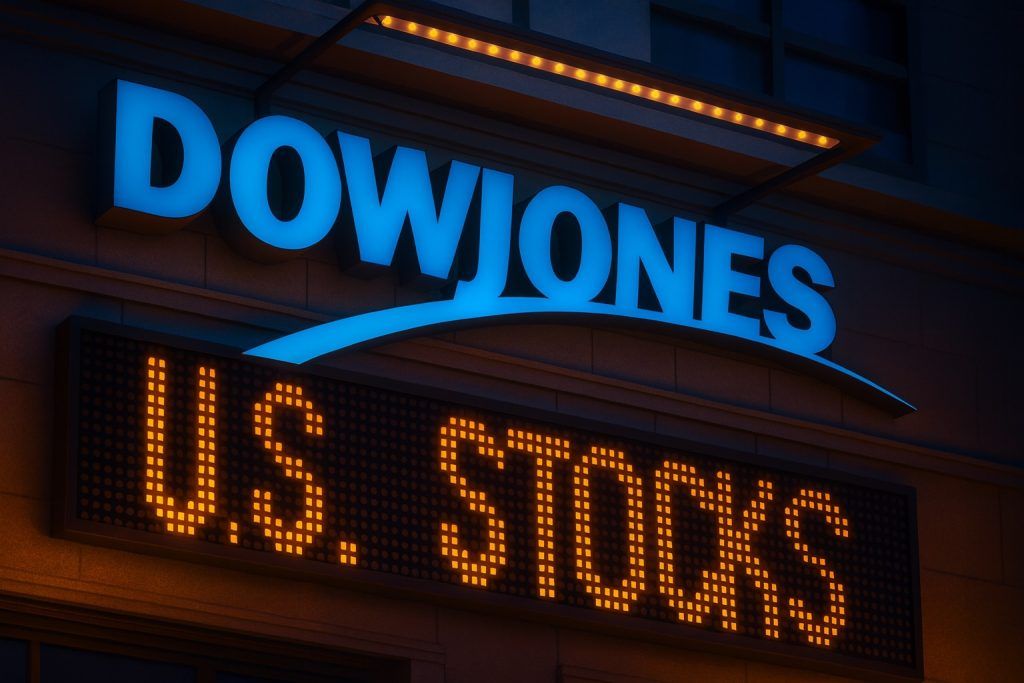On Thursday, November 20, 2025, the Nasdaq Composite staged one of its sharpest intraday reversals of the year. After surging more than 2% at the open on blockbuster Nvidia earnings and a stronger‑than‑expected U.S. jobs report, the tech-heavy index closed deep in the red as worries about an AI bubble, stretched valuations, and an uncertain Federal Reserve path slammed high-growth names.
At the closing bell, the Nasdaq Composite finished at 22,084.59, down 479.64 points, or 2.16%. The S&P 500 fell 1.52% to 6,539.09, while the Dow Jones Industrial Average lost 381.52 points, or 0.83%, to 45,757.25. [1]
A Wild Reversal: From +2.6% to More Than -2%
Both the Nasdaq and the Dow swung more than 1,000 points from their intraday highs to their lows, underscoring how fragile sentiment around AI and interest rates has become. [2]
Early in the session, the Nasdaq Composite was up as much as about 2.6%, lifted by a strong rebound in mega-cap tech and chip stocks. By the close, it had given back all those gains and more, ending down just over 2%—a dramatic intraday swing that several commentators described as one of the biggest “blown” rallies since April. [3]
The S&P 500 followed a similar pattern, flipping from a more-than-1% gain to a loss of roughly the same magnitude, while the Cboe Volatility Index (VIX) spiked as traders rushed to buy downside protection. [4]
Nvidia’s ‘Off-the-Charts’ AI Earnings: Spark, Then Selloff
The day started with genuine euphoria around Nvidia (NVDA).
- The chip giant reported third-quarter revenue that jumped about 62% year-on-year to around $57 billion, smashing Wall Street estimates.
- It guided fourth-quarter sales to roughly $65 billion, again above consensus, and signaled still‑expanding gross margins as AI data-center demand drives its business. [5]
- Management described demand for its AI accelerators as effectively “off the charts,” reinforcing Nvidia’s position at the center of the AI infrastructure build‑out. [6]
That backdrop powered a huge move at the open: Nvidia shares jumped as much as about 5% intraday, dragging the broader tech complex and the Nasdaq sharply higher. [7]
But the rally didn’t last. As the session wore on, investors rotated from excitement to skepticism:
- Nvidia reversed to finish the day lower, with Reuters noting the stock ended in the red after that early surge. [8]
- An index of U.S. semiconductor stocks—the PHLX Semiconductor Index (SOX)—slid about 5.1% to 6,331.58, extending its recent drop and underscoring how quickly AI optimism can flip to valuation anxiety. [9]
Crucially, the SOX had already fallen more than 10% from its recent closing peak earlier in the week, pushing it into technical “correction” territory. [10] That context made today’s additional 5% slide feel less like a blip and more like a continued reset for chip valuations.
Jobs Report: Strong Payrolls, Higher Unemployment, Confused Fed Bets
The other big catalyst was the long‑delayed September U.S. employment report, released today after being pushed back by the government shutdown.
Key points from the data:
- Nonfarm payrolls increased by 119,000, more than double economist expectations of roughly 50,000. [11]
- The unemployment rate rose to 4.4%, the highest in about five years. [12]
- Prior months (July and August) were revised lower, signaling that the labor market has been cooling more than previously reported. [13]
In other words: headline hiring was solid, but the trend is softer under the surface.
Market reaction to the jobs data was just as mixed as the numbers:
- Initially, investors took the report as “Goldilocks” news—strong enough to avoid recession worries but soft enough to keep the Fed on track for future rate cuts. That helped fuel the morning surge in stocks. [14]
- As the day progressed, traders reassessed. Commentary from economists highlighted that the report gives the Fed room to stay “somewhat restrictive” on policy and keep its focus on inflation, rather than rushing into a December cut. [15]
According to derivatives markets, the odds of a rate cut at the Fed’s December 10 meeting narrowed compared with earlier in the week, with futures still leaning toward no move this year but with a growing debate about the timing of cuts in 2026. [16]
On the bond side, Treasury yields actually edged lower despite the equity selloff: the 10‑year yield slipped to just above 4.1%, and the 2‑year rate also fell modestly, while the dollar firmed as traders tempered their rate‑cut expectations. [17]
Sector Snapshot: Tech Bleeds, Staples Hold Up
The reversal was fiercest in growth‑heavy corners of the market:
- Technology was the worst‑performing sector in the S&P 500, dragged down by chipmakers and high‑multiple software names. [18]
- The PHLX Semiconductor Index’s 5% slide weighed heavily on the Nasdaq, with many chip names turning sharply negative after strong early gains. [19]
- By contrast, consumer staples was the only S&P 500 sector to finish in the green, as investors sought shelter in more defensive, cash‑generative companies. [20]
Volatility jumped across the board, and the VIX spiked, reflecting a scramble for hedges after the morning’s “risk‑on” mood flipped to a risk‑off stampede. [21]
Big Nasdaq Movers: Walmart Shines, Micron & Datadog Hit Hard
Behind the index-level moves, a handful of high‑profile names told the story of the day.
Winners
- Walmart (WMT)
- Shares rose roughly 6–7%, making Walmart one of the day’s standout large‑cap gainers. [22]
- The retailer beat quarterly earnings and revenue expectations, raised its full‑year guidance, and announced plans to transfer its stock listing from the NYSE to the Nasdaq Global Select Market on December 9—a symbolic win for the Nasdaq exchange at a time when tech listings dominate. [23]
- Healthcare and data names like Regeneron and GE HealthCare also posted solid gains, helping cushion some of the damage in more cyclical and growth‑sensitive areas. [24]
Losers
The biggest pain was concentrated in semiconductors and high‑growth software:
- Micron Technology (MU) plunged by about 10%, adding to pressure on the already‑battered chip complex. [25]
- Datadog (DDOG) slumped around 8–9% after commentary from analysts suggested Palo Alto Networks’ acquisition of Chronosphere could intensify competition in observability and cloud monitoring. [26]
- Palo Alto Networks (PANW) itself dropped more than 6% on that $3.35 billion Chronosphere deal, as investors weighed integration risk and near‑term margin pressure. [27]
- Western Digital (WDC) and Insulet (PODD) were also among the day’s notable laggards, each losing more than 8%. [28]
Taken together, these moves highlight how quickly capital is rotating away from the highest‑beta corners of tech whenever macro uncertainty resurfaces.
Global Tech Pressure: AI Euphoria Meets Valuation Reality
The Nasdaq wasn’t alone. Global tech shares also faltered as the Nvidia‑led rally ran out of steam:
- Reuters reported that U.S. and European tech stocks gave back early gains, with chipmakers broadly turning negative and a global tech index sliding alongside the Nasdaq. [29]
- With the Nasdaq now well off its October high, today’s reversal adds to a growing sense that AI‑related valuations may have run ahead of fundamentals, even if demand for compute and cloud remains strong. [30]
At the same time, Nvidia’s actual results—massive revenue growth, rising margins, and robust guidance—show that fundamental earnings power is still there for some of the largest AI winners. The tension between extraordinary fundamentals and even more extraordinary valuations is what’s creating these violent swings. [31]
What Today’s Nasdaq Selloff Means for Investors
For investors watching the Nasdaq index today, three themes stand out:
- AI remains the core driver of market direction
- One earnings report—Nvidia’s—effectively set the tone for the entire session, both on the way up and on the way down.
- As long as AI infrastructure spending is seen as the main growth engine for large‑cap tech, single‑stock moves in a handful of AI leaders can swing the entire Nasdaq by more than a percentage point in a day. [32]
- Macro is back in the driver’s seat
- The 119,000-job September print with a higher 4.4% unemployment rate is the latest reminder that the labor market is cooling but not collapsing. [33]
- This kind of “mixed” data complicates the Fed’s decision-making and keeps rate‑cut timing uncertain, which tends to amplify volatility in growth stocks and long‑duration assets. [34]
- Intraday volatility is a feature, not a bug
- A 2–3% swing from high to low in a major index like the Nasdaq is usually associated with stress events, yet we’re seeing it on a routine macro‑and‑earnings day.
- That suggests markets are in a fragile equilibrium where sentiment can flip quickly based on incremental data about AI demand or interest‑rate expectations. [35]
For longer‑term investors, the underlying story—strong AI and cloud demand, decelerating but still‑solid job growth, and a Fed creeping toward eventual cuts—hasn’t fundamentally changed in a single session. But position sizing, diversification across sectors, and awareness of event risk (earnings, key data releases, Fed meetings) remain crucial in an environment where intraday moves are this violent.
The Bottom Line
- The Nasdaq Composite closed down 2.16% at 22,084.59 after being up more than 2% earlier in the day. [36]
- Nvidia’s spectacular AI earnings initially powered a global tech rally, but profit‑taking and valuation worries quickly turned that into a broad‑based tech selloff. [37]
- A mixed jobs report—strong payrolls but higher unemployment and downward revisions—clouded expectations for a December Fed rate cut, helping to fuel the afternoon reversal. [38]
- Semiconductor and software names led the declines, with the PHLX Semiconductor Index down about 5% and several high‑growth Nasdaq components sliding 8–10%. [39]
- Defensive sectors and select blue chips like Walmart bucked the trend, aided by strong earnings and, in Walmart’s case, its upcoming move to a Nasdaq listing. [40]
As always, this article is for informational purposes only and does not constitute financial advice. Investors should consider their own objectives and risk tolerance before making any investment decisions.
References
1. www.reuters.com, 2. www.reuters.com, 3. www.reuters.com, 4. www.reuters.com, 5. www.investopedia.com, 6. finance.yahoo.com, 7. www.reuters.com, 8. www.reuters.com, 9. indexes.nasdaqomx.com, 10. www.wsj.com, 11. 247wallst.com, 12. 247wallst.com, 13. 247wallst.com, 14. wtop.com, 15. www.marketscreener.com, 16. www.kiplinger.com, 17. www.reuters.com, 18. www.reuters.com, 19. indexes.nasdaqomx.com, 20. www.reuters.com, 21. www.reuters.com, 22. 247wallst.com, 23. www.reuters.com, 24. 247wallst.com, 25. 247wallst.com, 26. 247wallst.com, 27. www.nasdaq.com, 28. 247wallst.com, 29. www.reuters.com, 30. www.reuters.com, 31. www.investopedia.com, 32. www.reuters.com, 33. 247wallst.com, 34. www.marketscreener.com, 35. www.reuters.com, 36. www.reuters.com, 37. www.investopedia.com, 38. 247wallst.com, 39. indexes.nasdaqomx.com, 40. www.reuters.com








